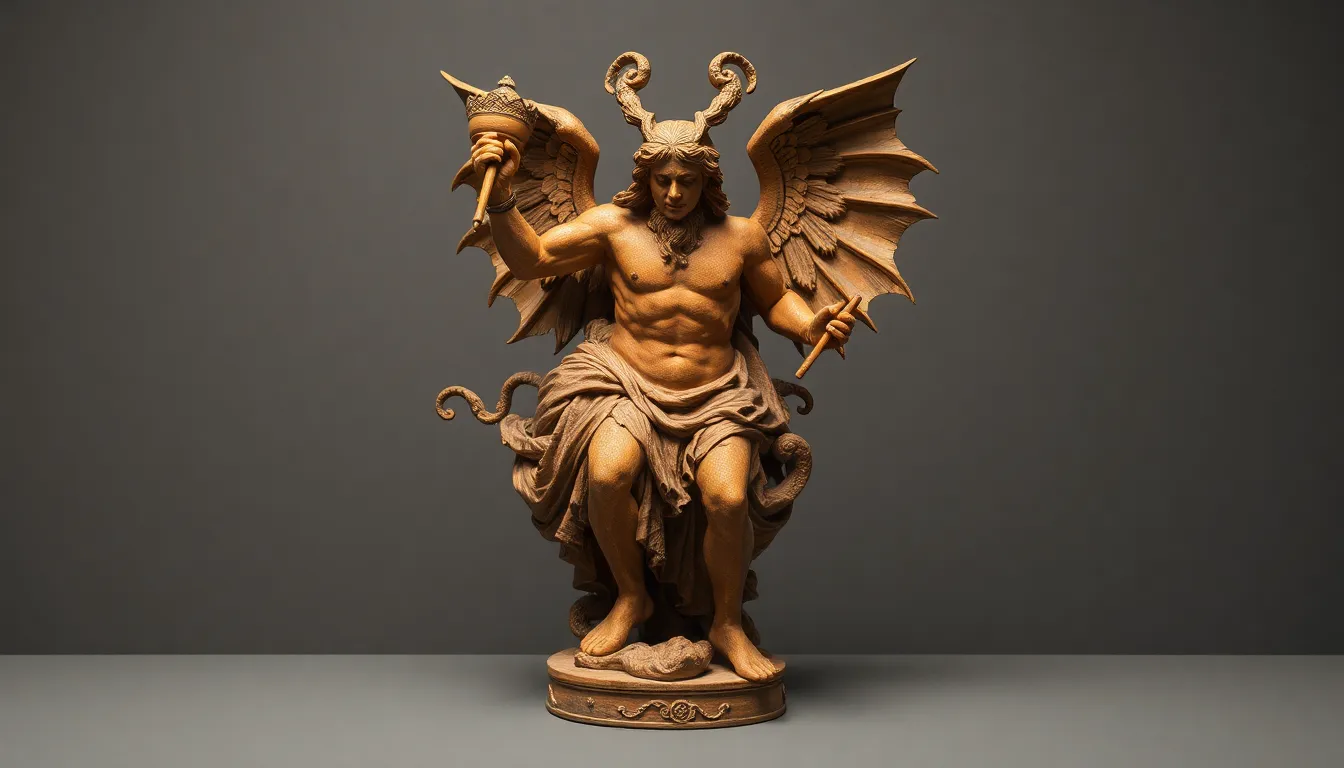Divine Retribution and Its Representation in Greek Pottery
I. Introduction
Divine retribution in ancient Greek culture refers to the belief that the gods would punish individuals for their transgressions, ensuring moral order in society. This concept was not only central to Greek mythology but also served as a guiding principle for ethical behavior among the populace.
Pottery served as a vital medium for storytelling and cultural expression in ancient Greece, capturing both daily life and significant mythological narratives. The artistry of Greek pottery provides invaluable insights into societal values, beliefs, and the intricate relationship between humans and the divine.
This article will explore the historical context of Greek pottery, the understanding of divine retribution within Greek mythology, the iconography associated with this theme, notable case studies, and the broader influence of these representations on Greek society and beyond.
II. Historical Context of Greek Pottery
The history of Greek pottery can be traced back to the Geometric period (circa 900-700 BCE) and has evolved through several distinct styles:
- Geometric Style: Characterized by geometric patterns and shapes, this style marked the beginning of Greek pottery.
- Black-Figure Technique: Emerging in the 7th century BCE, this style featured black figures painted on a red clay background, allowing for detailed depictions of mythological scenes.
- Red-Figure Technique: Developed in the 5th century BCE, this technique reversed the black-figure approach, allowing for more intricate and realistic portrayals of human anatomy and expressions.
Pottery played a crucial role in daily life, serving practical purposes such as storage and cooking, while also being integral to religious practices, used in rituals and offerings to the gods.
III. Understanding Divine Retribution in Greek Mythology
Divine retribution is vividly illustrated in numerous Greek myths. Key examples include:
- Prometheus: Punished by Zeus for giving fire to humanity, he was bound to a rock where an eagle would eat his liver daily.
- Arachne: A talented weaver who challenged Athena, leading to her transformation into a spider as punishment for her hubris.
- Niobe: A queen who boasted about her children, only to see them killed by Apollo and Artemis as punishment for her arrogance.
The gods and goddesses, particularly Zeus and Nemesis, were seen as enforcers of justice, ensuring that those who committed wrongs received their due punishment. This belief in retribution not only maintained social order but also reinforced moral and ethical conduct among the people.
IV. Iconography of Divine Retribution on Pottery
The depiction of divine retribution on pottery often includes common themes and motifs. These can include:
- The presence of deities administering punishment
- Scenes of transformation or suffering
- Symbols of justice, such as scales or weapons
Specific vases, such as the “Orestes Vase,” depict scenes of mythological punishments that convey powerful messages about the consequences of human actions. Artistic techniques such as chiaroscuro (the use of strong contrasts between light and dark) were employed to enhance the emotional impact of these narratives. The symbolism often conveyed deeper meanings about fate, justice, and the human condition.
V. Case Studies of Significant Pottery Pieces
One notable example is the “Orestes Vase,” which illustrates the story of Orestes avenging his father’s murder by killing his mother, Clytemnestra. The vase captures the moment of divine retribution as Orestes is pursued by the Furies, representing the inescapable nature of justice.
These scenes not only depict the narratives of retribution but also reflect the values and beliefs of Greek society, emphasizing the themes of justice, fate, and the consequences of one’s actions. The impact of such works continues to resonate, influencing contemporary understandings of Greek cultural values.
VI. The Influence of Divine Retribution on Greek Society
The portrayal of divine retribution through pottery significantly shaped public perception of justice in ancient Greece. It served as a form of moral instruction, reminding individuals of the repercussions of their actions and the ever-watchful eyes of the gods.
Pottery not only reflected societal norms but also played an educational role, imparting lessons on morality and ethics to the populace. This connection between art and civic identity fostered a community that valued justice and accountability.
VII. Comparative Analysis with Other Cultures
Divine retribution is a common theme in many ancient cultures. For instance:
- Mesopotamian Myths: Like the story of Gilgamesh, which explores themes of human hubris and divine punishment.
- Egyptian Mythology: The weighing of the heart against a feather in the afterlife, determining one’s fate based on earthly deeds.
While similarities exist in the artistic representations of justice, Greek pottery is distinct in its detailed narratives and emphasis on individual moral responsibility. Moreover, Greek artistic traditions influenced later civilizations, including Roman and Renaissance art, where themes of retribution continued to resonate.
VIII. Conclusion
In summary, the exploration of divine retribution in Greek pottery reveals a complex interplay of mythology, morality, and artistry. The vivid depictions of divine punishment not only tell stories of individual characters but also reflect the overarching values of Greek society.
The enduring legacy of these themes can be seen in modern art and culture, where the concepts of justice and ethical behavior continue to be relevant. Preserving and studying Greek pottery allows us to appreciate the narratives that have shaped human thought and societal values throughout history.




